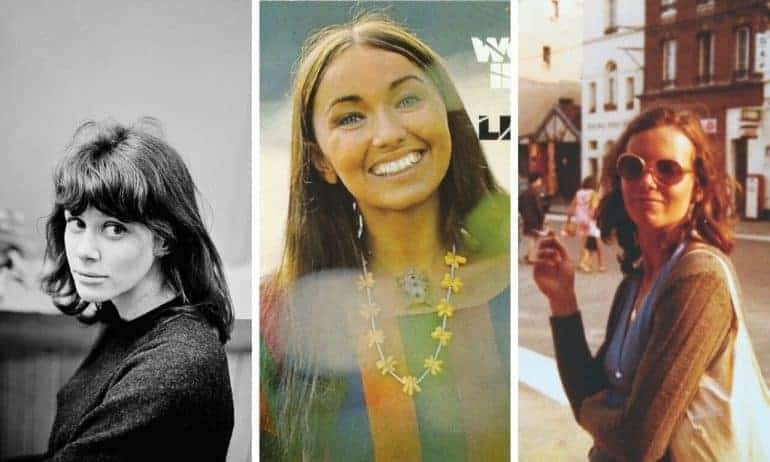Everyone knows the most famous female singers of the ’60s and ’70s such as Janis Joplin, Joni Mitchell, and Emmylou Harris. But have you heard of the likes of Sibylle Baier, Vashti Bunyan, and Leonda?
Most of these artists went virtually unheard of until recently. Yet their music is of a caliber equivalent to the most well-known female singers.
Prepare to have your mind blown with these fine tunes and interesting stories.
Sibylle Baier
Sibylle Baier was born on the 25th of February 1955 in Germany. At the age of 16, her good friend Claudine pulled her out from under the bed in her room and persuaded a reluctant Sibylle to go on a road trip to Strasbourg in France, across the Alps, and into Genoa.
After returning home to Germany, she felt inspired and overall thankful for just being alive. Feeling encouraged, she began to write her first-ever song titled “Remember the Day,” and what a song it turned out to be!
It’s hard to believe it’s written and sung by a 16-year-old-girl. The intimacy and closeness of the track reflect a woman much older in age and full of life-long experience. From 1970 to 1973, Sibylle Baier began writing and recording more songs in her bedroom using a reel-to-reel recording device.
At the same time, Sibylle was acting. In 1973, she featured in German filmmaker Wim Wenders’ Alice in the Cities. Having recorded a small collection of songs, she Gave Wenders a cassette copy.
Crazily enough, 35 years later whilst visiting Reckless Records in Chicago, Wenders recognized a young face on a record cover and realized it was Sibylle Baier!
Sibylle’s son Robby had discovered his mother’s music and decided to compile her unreleased songs onto a CD. He then began passing them around to friends and family, of whom J. Mascis of Dinosaur Jr. was a happy receiver.
Impressed by the CD, he shared the album with a friend at Orange Twin record label, who reissued the album exactly as it was recorded 35 years prior.
The album Colour Green is seriously good. Sibylle Baier’s songs are simple, yet they touch upon deeper subjects such as life and its fragile beauty.
It still blows my mind how a 16-year-old wrote and recorded these songs, virtually unheard of for 30 years, and are of the quality of similarly talented female singers of the 70s like Joni Mitchel and even male singers like Leonard Cohen.
Vashti Bunyan
Although slightly more well known, to many the name Vashti Bunyan remains quite mythical. At the age of 18, Bunyan, born in Newcastle England, traveled to New York in 1963 to visit her sister.
While on the other side of the pond, she picked up a copy of Bob Dylan’s classic masterpiece The Freewheelin’ Bob Dylan, which inspired her to become a musician.
The songs on The Freewheelin’ Bob Dylan opened my eyes to a world so different to mine, one that I wanted to be part of and understand. It sowed the seeds for my romantic notion of becoming a wandering musician.”
Vashti Bunyan
Upon returning to London, she began tirelessly teaching herself to play guitar and write songs. So much so that she was expelled from her place at the Ruskin School of Drawing in Oxford. It wasn’t easy though, but through a friend of her mother, she managed to meet Rolling Stones manager Andrew Loog Oldham.
Under his creative direction, he signed Bunyan and gave her the Mick Jagger and Keith Richards song “Some Things Just Stick in Your Mind.” Released on Columbia records in 1966 alongside a few of her other songs, the record went largely unnoticed.
It didn’t turn out the way I wanted it to – I didn’t succeed in bringing quiet acoustic songs into the mainstream. When I met art student Robert Lewis, our like-minded thoughts and dreams led to a plan to escape the city and head for what we hoped would be a more meaningful life. We intended to make our actual days the picture, the painting, the song, says Vashti on what would become an almost two-year-long journey across Britain, on their way to Skye.”
Vashti Bunyan in an interview with Tidal
Her boyfriend Robert Lewis was friends with Donovan, who lent the pair 100 pounds to buy a horse and buggy and travel to Donovan’s commune on the Isle of Skye in Scotland. Inspired by the idyllic landscapes on her travels, she continued to make music. During a break from her 700-mile trip, in 1968 she met American record producer Joe Boyd.
Boyd convinced her to have another go inside the studio and offered to record a full album of her songs from her travels. Encapsulating her wonderful travels, Vashti Bunyan released her debut album Just Another Diamond Day in 1970. Sadly again, even with the support of music big-wig Joe Boyd, the album dissipated into thin air.
30 years later near the end of the ‘90s, Bunyan noticed that her debut album had garnered a cult following. After regaining the rights to her original songs, in 2000 she reissued the album and sold over 50,000 copies, reigniting her belated music career.
The album is simply beautiful, her wispy voice and melancholic lyrics create an ethereal atmosphere epitomizing early ‘70s folk culture.
Leonda
Leonda was a regular member of the Boston coffeehouse folk scene during the mid-1960s. She garnered a reputation as a unique folk and blues singer, with her Native American background contributing to her raspy yet appealing voice.
Despite never becoming a part of the “celebrity folk scene,” her sole album Woman In The Sun was released on Columbia Records subsidiary Epic Records in 1969.
Epic records included other notable ’60s acts such as Jeff Beck, The Dave Clark Five, Donovan, and The Yardbirds. Although with the backing of a major label, Leonda’s Woman In The Sun never really took off.
This lost 1969 acid-folk album features backing from Skip Prokop, Adam Mitchell, and Brad Campbell (of psych favorites The Paupers). Along with long-time Muddy Waters sideman Sammy Lawhorn and Ted Irwin, known for his early collaborations with Jake Holmes.
Overall, by combining memorable acoustic tunes and Native American themed lyrics, Leonda creates a sad-tinged folk album that is well worth a listen!
Listening to the above albums now, it’s truly hard to believe how these three female singers went unnoticed.
Thankfully with the help of the internet, their music has been rediscovered and has even provided some of them with a musical career they so deserve.
Similar Stories…
Female Singers of the ’60s – Top 20 Greatest Artists We Love
- The Alice Cooper Fact Sheet – 5 Things You Need To Know - January 12, 2023
- Everybody Knows The Words, But What Is Hotel California About? - April 29, 2022
- What Is The Meaning Of Stairway To Heaven: Led Zeppelin’s Amazing 1971 Musical Epic? - April 24, 2022


